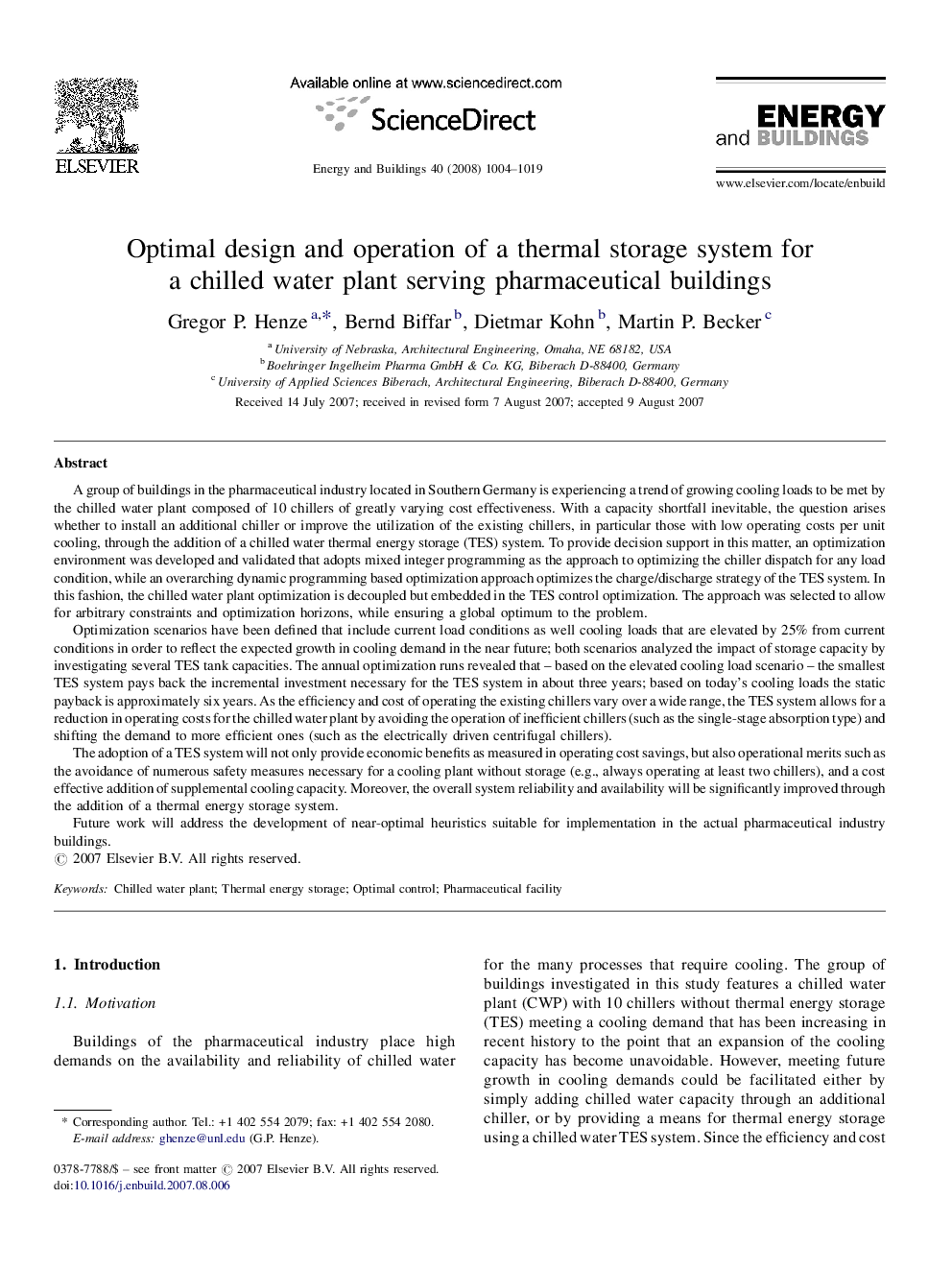| کد مقاله | کد نشریه | سال انتشار | مقاله انگلیسی | نسخه تمام متن |
|---|---|---|---|---|
| 265494 | 504165 | 2008 | 16 صفحه PDF | دانلود رایگان |

A group of buildings in the pharmaceutical industry located in Southern Germany is experiencing a trend of growing cooling loads to be met by the chilled water plant composed of 10 chillers of greatly varying cost effectiveness. With a capacity shortfall inevitable, the question arises whether to install an additional chiller or improve the utilization of the existing chillers, in particular those with low operating costs per unit cooling, through the addition of a chilled water thermal energy storage (TES) system. To provide decision support in this matter, an optimization environment was developed and validated that adopts mixed integer programming as the approach to optimizing the chiller dispatch for any load condition, while an overarching dynamic programming based optimization approach optimizes the charge/discharge strategy of the TES system. In this fashion, the chilled water plant optimization is decoupled but embedded in the TES control optimization. The approach was selected to allow for arbitrary constraints and optimization horizons, while ensuring a global optimum to the problem.Optimization scenarios have been defined that include current load conditions as well cooling loads that are elevated by 25% from current conditions in order to reflect the expected growth in cooling demand in the near future; both scenarios analyzed the impact of storage capacity by investigating several TES tank capacities. The annual optimization runs revealed that – based on the elevated cooling load scenario – the smallest TES system pays back the incremental investment necessary for the TES system in about three years; based on today’s cooling loads the static payback is approximately six years. As the efficiency and cost of operating the existing chillers vary over a wide range, the TES system allows for a reduction in operating costs for the chilled water plant by avoiding the operation of inefficient chillers (such as the single-stage absorption type) and shifting the demand to more efficient ones (such as the electrically driven centrifugal chillers).The adoption of a TES system will not only provide economic benefits as measured in operating cost savings, but also operational merits such as the avoidance of numerous safety measures necessary for a cooling plant without storage (e.g., always operating at least two chillers), and a cost effective addition of supplemental cooling capacity. Moreover, the overall system reliability and availability will be significantly improved through the addition of a thermal energy storage system.Future work will address the development of near-optimal heuristics suitable for implementation in the actual pharmaceutical industry buildings.
Journal: Energy and Buildings - Volume 40, Issue 6, 2008, Pages 1004–1019